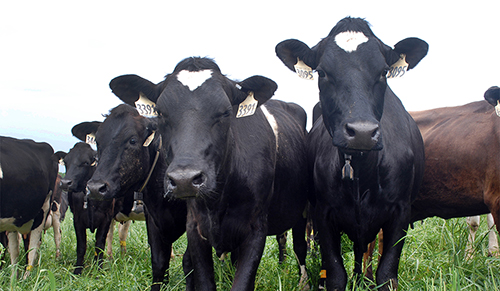
How does a year always seem to go by in a blur? And why does all of the big dairy news always seem like it just happened? Here are 10 items that stick out in my mind:
Manure is a four-letter word. Wow, did a judge in Yakima, Wash., ever kick off 2015 with a bombshell. In January he ruled that if manure and wastewater application exceeds crop uptake, then it is a threat to groundwater quality and a violation of environmental laws. The rest of this story hasn't even begun to be written, but the potential ending should already scare the pants off anyone who ever uses fertilizer.
A 2009-scale dairy meltdown is hitting Europe and Oceania. Rising production, plummeting exports, and persistent below-cost milk prices have hammered dairy producers in Europe, Australia and New Zealand this year. Like in the U.S., many farms have been pushed to the brink of bankruptcy . . . or over the edge. It is a financial disaster that isn't close to being over yet.
Dairying steps up to defend its image. "The Udder Truth" promotion campaign is waging war on the battlefield of social media to debunk myths and reclaim the industry's trust among millennial consumers (ages 15 to 35). Millennial milk producers are leading the way by showing and telling their own on-farm stories to make peer-to-peer connections.
MPP-Dairy was a losing bet. The only Margin Protection Program-Dairy (MPP-D) payments made in 2015 went to producers who bought the maximum $8 per hundredweight coverage - and it's doubtful that any recouped their premium costs. That means the 45.5 percent of U.S. dairies that didn't sign up at all made the best bet.
The end to tail docking is in sight. It has always been an indefensible public relations black eye, and the national Farmers Assuring Responsible Management (FARM) animal care program finally decided to move up its ban on the practice by five years. Ninety percent of the nation's milk comes from FARM members, who now have until January 1, 2017, to stop the practice.
Fat is back. The wheels came off the "fat is bad" bandwagon in 2015, as fad finally gave way to fact. Even the federal government is now distinguishing between saturated fats and fats that are a natural part of foods. But no part of this about-face is sweeter than McDonald's decision to replace liquid margarine with real butter in its 14,000 U.S. restaurants.
WOTUS hocus-pocus. Congressional backlash is growing even bigger against the Environmental Protection Agency (EPA) over its attempt to redefine "Waters of the United States," which many agriculture groups said was really a grab for more regulatory power. The nonpartisan Government Accountability Office said EPA's aggressive social media campaign to promote its proposal broke a federal law against publicity and promotion and another against lobbying. Calls are increasing to abolish EPA.
California isn't Superman. Drought and forage quality are hobbling the nation's largest dairy state. Weak production per cow has pushed total output below year-earlier levels all 11 months so far in 2015, amounting to 1.35 billion pounds less milk. Look for mud from the "super El Niño" winter weather pattern that is forecast to make things even worse.
The Upper Midwest has muscle. With South Dakota, Michigan and Wisconsin leading the way, the Upper Midwest is "producing like its life depends on it," according to one of the region's dairy economists. What California and the West are losing from drought, a great harvest in the Upper Midwest is making up for.
COOL was beaten like a dead horse. Canada and Mexico went to the World Trade Organization (WTO) five times claiming that mandatory Country of Origin Labeling (COOL) for beef and pork in the U.S. was discriminatory and violated global trade rules. And WTO arbitrators agreed with them all five times. Earlier this month they gave the two nations the go-ahead to levy $1 billion in retaliatory tariffs - which hopefully won't happen now that COOL was repealed in the 2016 federal budget.
This year will be a challenge. As bad as producer milk prices were in 2015 - they're on pace to average about $15.80 per hundredweight - Class III futures point to 2016 being even worse. Things will be especially tough the first half of the year, as January, February and March prices have already spent time below $14. Long-range futures currently suggest a yearlong average of around $15.25.
(c) Hoard's Dairyman Intel 2015
December 28, 2015








